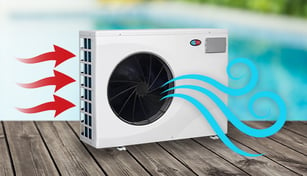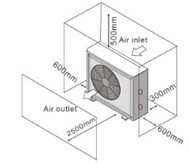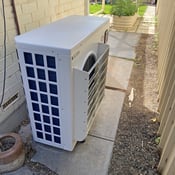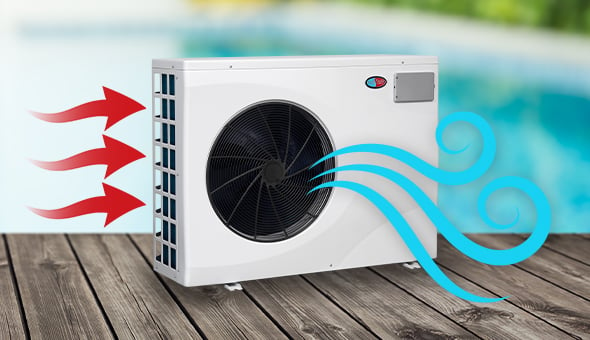Can a heat pump be installed inside a shed?
When installing a swimming pool heat pump, a lot of customers ask whether they can put the heat pump inside an enclosed area, like a shed, acoustic box or their garage. The simple answer is yes, however, there is a reasonable sized but! The heat pump's exhaust fan (usually located on the front of the unit) pumps out a lot of super cold air and this needs to be vented directly to outside air.
Otherwise, your heat pump is going to be working harder than a one armed bricklayer. The main reason for this is heat pumps work by using the temperature in the air to generate the heat required to get your pool nice and toasty. What is left is cold air with the heat stripped out of it and it is this air that comes out of the heat pump fan. If you don't have that super cold air venting to the outside, you will turn your enclosed shed into a refrigerator. Great if you want to keep a lot of beers cold however not so good if you want a warm pool. In some instances, unsuspecting owners have opened their shed door and found ice on the floor and hanging from beams.

Why is this a problem? If the heat pump is drawing in refrigerated air, there's very little ambient temperature for the heat pump to condense and turn into heated water for your pool. You'll find your heat pump is running hours longer and working a lot harder than it should to keep your pool at your desired temperature. Your power bills are going to put a cape on and soar up like Superman. You will also wear out your heater years earlier. Given a decent heat pump will set you back thousands, setting up the correct ventilation will keep plenty of your hard earned cash in your back pocket where it belongs.
The most common solution is to cut an opening in the shed wall that is the same diameter as the heat pump fan and put the fan up to the wall opening. Cheap, easy, and very effective. If you look closely at your heat pump, you will see it smiling back at you!
Does the same reduced performance occur if a heat pump is installed outdoors and is venting into a solid wall? Yes. The refrigerated air hits the wall and bounces back towards the heat pump which then sucks in the cold air. Ideally, you want at least 2.5 metres space between the fan side of the heat pump and any solid objects like a fence or a wall. To ensure sufficient air inlet, have at least 300mm space between the back of the unit and any solid walls shown in the diagram below.

If you don't have 2.5 metres, you can fit a louver to the front of the heat pump which directs the air up and away from the object in front of the heat pump. 
Another option is to wall mount your heat pump to provide the correct clearance however take into account increasing your water pump size to compensate for having to push water vertically. Or, order a top venting heat pump model that pushes the cold air through the top of the unit rather than the front. These models (all brands) tend to be slightly less efficient however not by enough to scratch them off your shopping list.
Lastly, a cheaply made heat pump with a poor heating efficiency rating that is then asked to draw in refrigerated air is going to be worse to own than a Russian built Lada Neva car from the 1980's. Always pay that little bit extra for high efficiency heaters. The payback in saved power bills is pretty short. Make sure that your installation area is clear and your heat pump can breathe. The easier it can breathe, the easier it can heat, the cheaper it will be to heat your pool and the longer your heat pump is going to last because it's not working anywhere near as hard.
Related Blogs
If your heat pump is running and you’re noticing water at the bottom of the unit or around the unit that you haven’t noticed previously, it is easy to think the worst and assume that your heat pump....
If you're like most DIY pool customers, you might be a little hesitant about investing in a pool that you haven't physically seen or purchasing it from people you haven't met in person. It's 100% ok....
You’re running your undersized pool pump for 10 hours a day, pouring in loads of chemicals and your water is still cloudy (this wasn’t in the brochure you think). Or your oversized pump (bigger is....
About The Author
My wife and I grew up playing in swimming pools. Our daughters learnt to swim in our backyard fibreglass swimming pool. There is nothing quite like hearing kids splashing about and giggling. As pools do, our pool became a social magnet for friends, family and neighbours which we loved. Helping customers to have their own pool and saving customers thousands on their pool and equipment is the best job in the world.
























